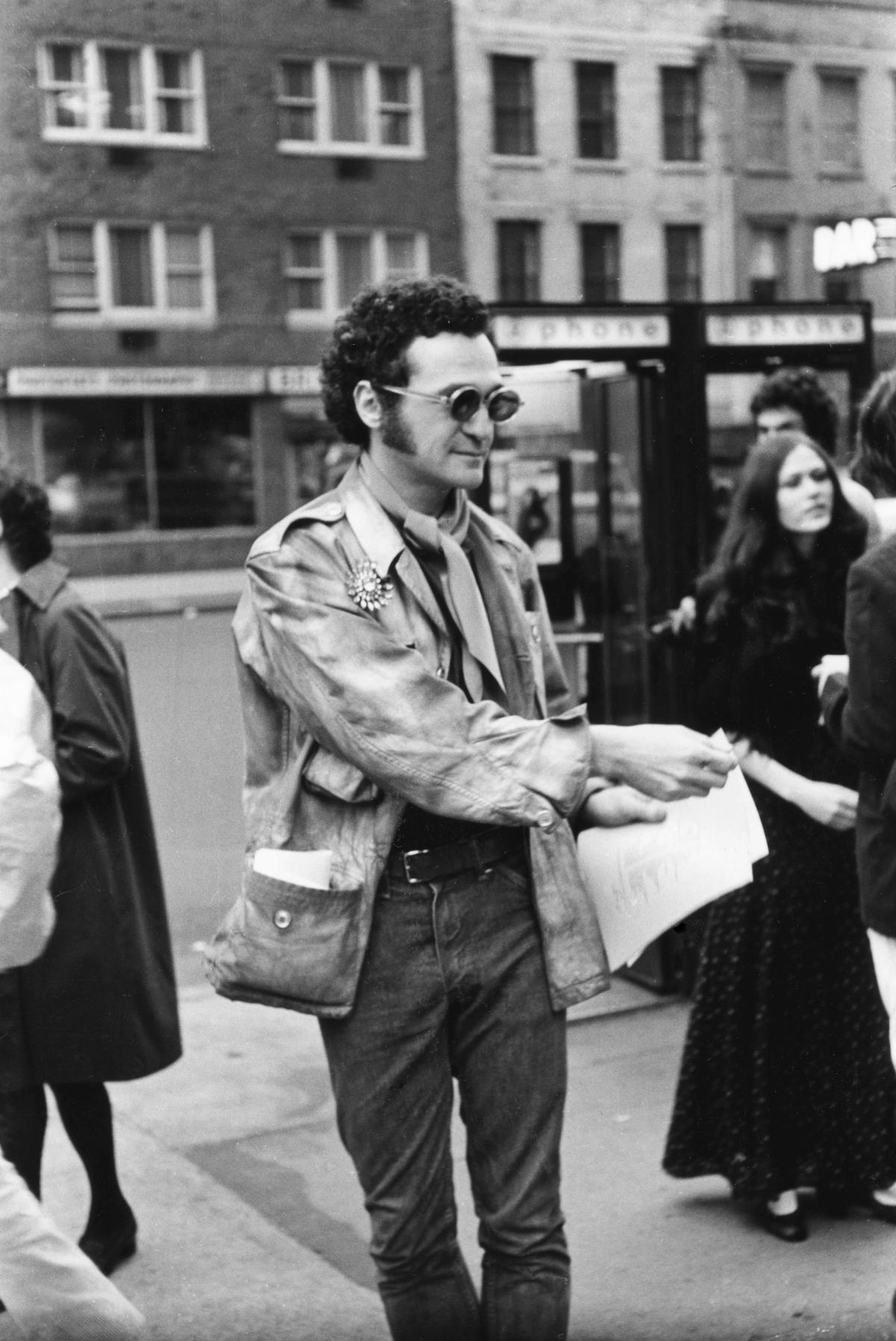The US poet, artist and activist John Giorno, the naked man reclining in Andy Warhol’s five-hour film Sleep (1963), died last Friday (11 October), aged 82. His death was confirmed by his galleries Almine Rech and New York-based Sperone Westwater which is showing new sculptures and painted posters by Giorno (Do the Undone; until 26 October). Warhol’s Sleep piece is on show at the newly refurbished Museum of Modern Art (MoMA) in New York.
In an interview with the artist Rob Pruitt in 2013, Giorno discusses Sleep, saying: “About the ass, I was just amazed that it got in the movie. That was a daring move for Andy [Giorno’s partner at the time]. He was very aware of this. He knew in this homophobic world that he could not have a gay movie—that was the kiss of death. So I’m amazed that the ass got in there.”In the same article in Interview magazine, Pruitt wrote that Giorno’s works “refuse to stand still. They swirl and build and cultivate in their constant cultural rotation.”
Giorno was born in New York in 1936, and worked as a stockbroker after graduating from Columbia University in 1958. Reading Allen Ginsberg’s seminal poem Howl at college “blew his mind”, Giorno said, and from his storied building on 222 Bowery known as the “Bunker”, in the early 1960s he set about changing how poetry is perceived and created. “It occurred to me that poetry was seventy-five years behind painting and sculpture and dance and music,” he told Hans Ulrich Obrist, the artistic director of London’s Serpentine Galleries, in 2002.
One of his most innovative projects was Dial-A-Poem, shown at MoMA in 1970 in the exhibition Information, whereby people could ring a phone number and hear poetry by writers such as Anne Waldman and John Ashbery, as well as civil rights speeches. The number was also listed in The New York Times.
“I sort of stumbled on it by chance—this phenomenon of connecting a telephone with content and publicity. I was talking to someone on the telephone one morning, and it was so boring. I probably had a hangover and was probably crashing, and I got irritable and said to myself at that moment, ‘Why can’t this be a poem?’,” Giorno told Interview. More than a million people eventually dialled up.
In 1984, he founded the Aids Treatment Project, which raised funds for HIV/Aids patients. In later years meanwhile, Giorno underwent something of a renaissance, making his mark with silkscreen text-based canvases on rainbow backgrounds, emblazoned with messages such as Don’t Wait for Anything and You Got to Burn to Shine. He also embraced technology, featuring on the immersive AR installation [AR]T Walk launched by Apple earlier this year in partnership with the New Museum, New York.
In 2015, a vast retrospective organised by his husband, the artist Ugo Rondinone, opened at the Palais de Tokyo. Curators at the Paris-based contemporary art centre, who described Giorno as a “key figure of America’s counterculture since the 1960s”, tweeted that “we had the honour to present his work… he will be missed.”
Elizabeth Dee, co-founder of the Independent fair, wrote on Facebook: “When I first met John, it was after his performance at Independent in 2012 and he didn’t have a gallery. This was at a time when I felt the world was moving closer toward his work, which for decades was groundbreaking for its time. John’s work in poetry, performance, new media, drawing, painting and installation since the 1960s was unprecedented and undervalued at that time, but this was beginning to change with shows at the Palais de Tokyo and other generations connecting to John’s important work.”


